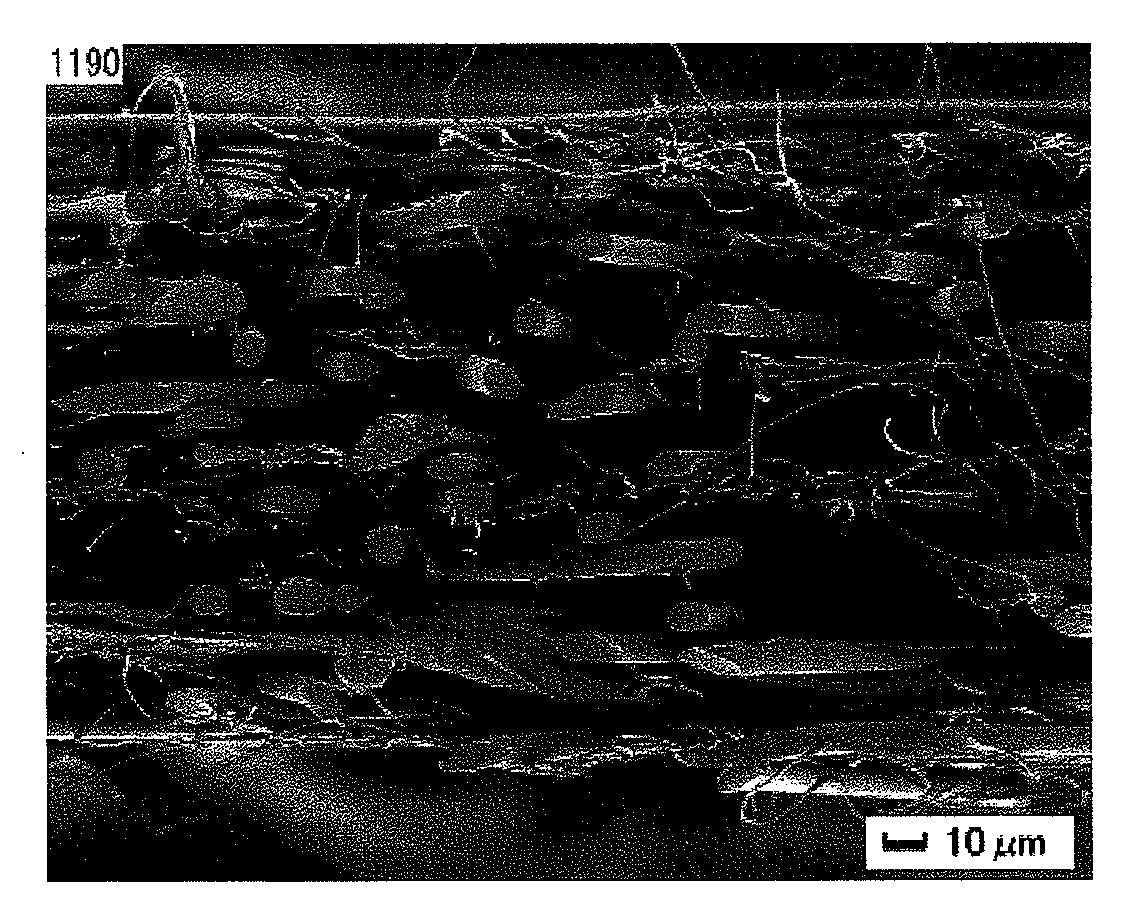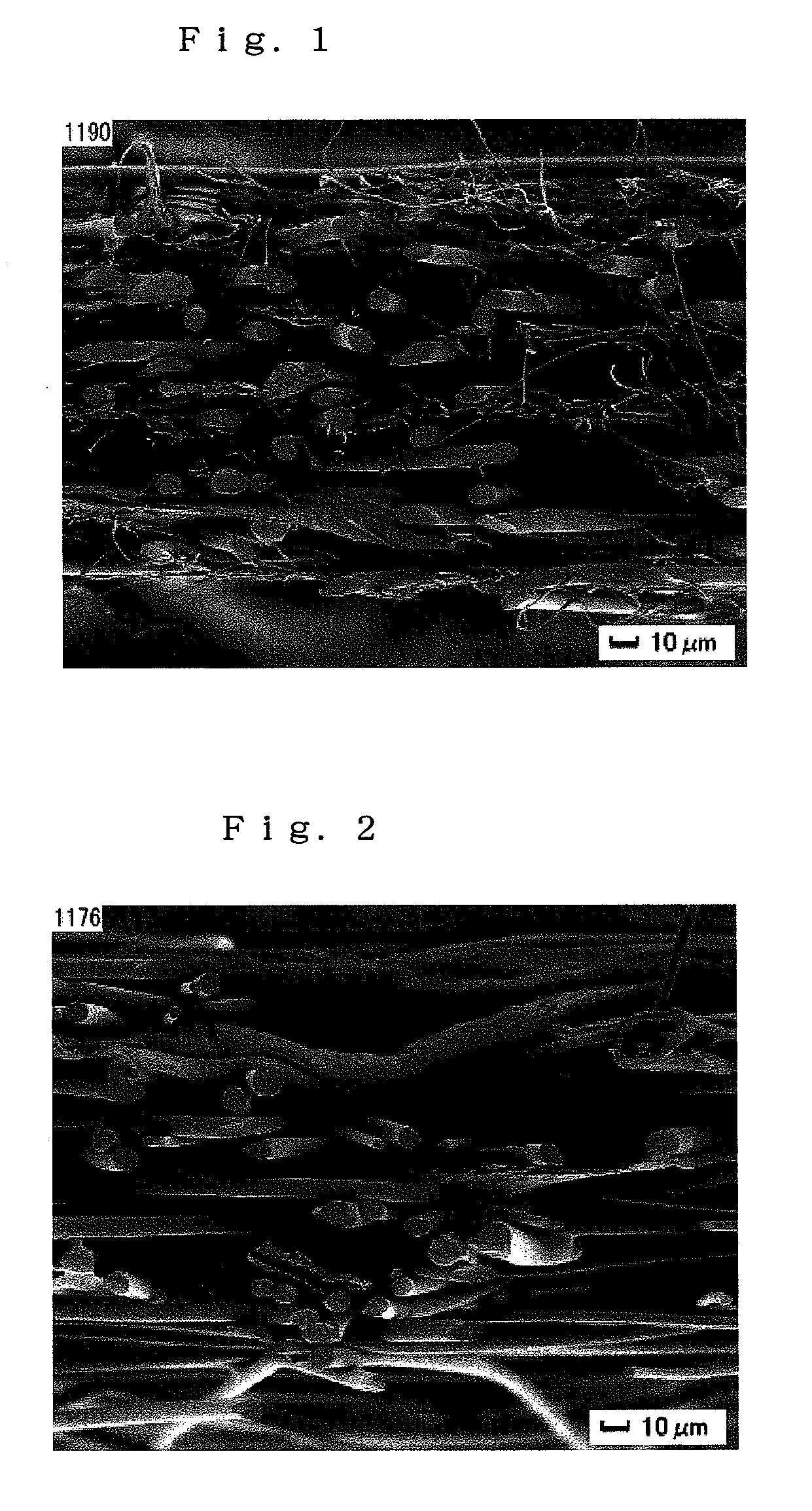Wet type nonwoven fabric and filter
a filter and non-woven fabric technology, applied in the field of wet-type non-woven fabric and filter, can solve the problems of insufficient filter quality and insufficient collection efficiency, and achieve the effect of excellent collection efficiency
- Summary
- Abstract
- Description
- Claims
- Application Information
AI Technical Summary
Benefits of technology
Problems solved by technology
Method used
Image
Examples
example 1
[0062]While using polyethylene terephthalate having melt viscosity of 120 Pa·sec at 285° C. for the island component and a modified polyethylene terephthalate formed by copolymerizing 4% by weight of polyethylene glycol having melt viscosity of 135 Pa·sec at 285° C. and the average molecular weight of 4000 and 9% by mole of 5-sodium sulfoisophthalic acid for the sea component, fiber spinning was performed at the weight ratio of sea:island=10:90 with a spinneret having the island number of 400, and then the product was taken up at a fiber spinning rate of 1500 m / min. Difference in alkali reduction rates was 1000 times. The product was stretched to ×3.9, cut to 1000 μm with a guillotine cutter to give a conjugate fiber for a short fiber A. After the reduction of the conjugate fiber by 10% with a 4% NaOH aqueous solution at 75° C., the generation of a ultrathin short fiber having a relatively uniform fiber diameter and fiber length was confirmed. Thus the fiber was determined to be the...
example 2
[0065]A wet type nonwoven fabric was obtained through treatment / processing under the same conditions as in Example 1, except for changing the ratio of fibers used in Example 1 (short fiber A / binder fiber B / another fiber=50 / 30 / 20). Physical properties of the obtained wet type nonwoven fabric are shown in Table 1.
example 3
[0066]A wet type nonwoven fabric was obtained through treatment / processing under the same conditions as in Example 1, except for changing the ratio of fibers used in Example 1 (short fiber A / binder fiber B / another fiber=20 / 50 / 30). Physical properties of the obtained wet type nonwoven fabric are shown in Table 1.
PUM
| Property | Measurement | Unit |
|---|---|---|
| length | aaaaa | aaaaa |
| diameter | aaaaa | aaaaa |
| length | aaaaa | aaaaa |
Abstract
Description
Claims
Application Information
 Login to View More
Login to View More - R&D
- Intellectual Property
- Life Sciences
- Materials
- Tech Scout
- Unparalleled Data Quality
- Higher Quality Content
- 60% Fewer Hallucinations
Browse by: Latest US Patents, China's latest patents, Technical Efficacy Thesaurus, Application Domain, Technology Topic, Popular Technical Reports.
© 2025 PatSnap. All rights reserved.Legal|Privacy policy|Modern Slavery Act Transparency Statement|Sitemap|About US| Contact US: help@patsnap.com


